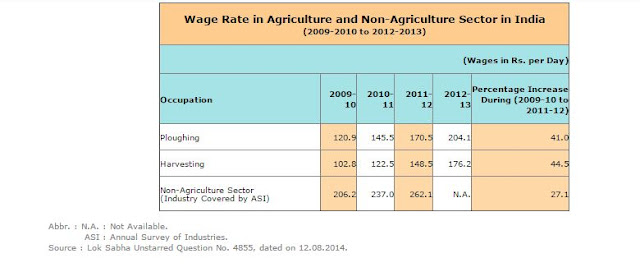State elections: What is happening?
Recent state election results talk less about any wave and more about the framework of the Indian democracy. In the representative parliamentary democracy, seat numbers matter more. Therefore it becomes important to distribute vote share to maximize the winning seats. In Rajasthan, the winning party wins more seats by managing the vote shares.
Graph no.1: Year wise difference between seat share and the vote share of parties winning seats in Rajasthan (Data sources: Election Commission of India)
All small parties hold more vote share but fail to convert it into seats. That shows the importance of the small parties in regional parties. Managing the vote share of small share will definitely help the big state as well as national parties to win more seats.
Graph no.2: Year wise difference between seat share and the vote share of BJP and Congress in Rajasthan (Data sources: Election Commission of India)
Congress party managed the vote share well in 1998, 2008 and 2018. Remember in these years, Congress has formed the government.
On the other hand, BJP managed the vote share fairly in 2003 and 2013. In these years, BJP formed the government.
This shows the importance of the formation of the constituencies for election. If constituencies are formed where the votes are concentrated then it will help the concerned party to manage the vote share easily. This also points out the voter registration in particular constituency.
Graph no.3: Vote share in Rajasthan (Data source: Election Commission of India)
The vote share of BJP in 2013 was very high. This can be viewed as the impact of the Modi wave. Except for 2013, the vote share of BJP and Congress is almost the same. The government forming party manage these vote share pretty well and that’s why the difference in the seats is generated.
For Madhya Pradesh, recent election result shows that parties are managing their vote share very well.
Graph no.4: Year wise difference between seat share and the vote share of parties winning seats in Madhya Pradesh (Data sources: Election Commission of India)
The difference is reducing a for National big parties but for small parties, it still negative which means small parties are unable to convert the vote share into the seat share.
Graph no.5: Year wise difference between seat share and vote share of BJP and Congress in Madhya Pradesh (Data sources: Election Commission of India)
In 1998, Congress formed the government in Madhya Pradesh. In 1998 the difference between seat share and vote share is positive and more than the BJP but after 1998, it became negative in 2003 and 2008 while the difference is positive for BJP. And in 2018, the difference is more positive for Congress. It means Madhya Pradesh, BJP managed their vote share extremely well. The difference between seat share and vote share is very high in 2003 and 2008. Again the party which manage the vote share properly forms the government.
Graph no.5: Vote share in Madhya Pradesh (Data source: Election Commission of India)
It is true that the vote share of BJP in Madhya Pradesh is really high in 2003 and 2008 and 2013. But the difference in the seat share and vote share is also high. The high vote share is converted into the higher seat share. This shows that the BJP had really good control in Madhya Pradesh. But recent election result tells that the control of BJP over the Madhya Pradesh is declined rapidly.
Graph no.7: The disproportional index shows the degree of divergence of seats from the vote shares in Rajasthan. (Data source: Author uses the date from Election Commission of India to calculate the disproportional index)
Graph no.8: The disproportional index shows the degree of divergence of seats from the vote shares in Madhya Pradesh. (Data source: Author uses the date from Election Commission of India to calculate the disproportional index).
This indicator lies between 0 and 1. If it is 0 then vote share is completely converted into the seat share But if it is one then it shows that even it is a democracy, the political system is behaving like the autocracy.
This indicator is actually reducing for both states that mean the difference between vote share and seat share for winning parties is declining which shows that the winning parties are gradually managing their vote share properly.The parties which are unable to win the seats or are winning few seats are not able to manage their vote shares.
Therefore now for national and big parties if they want to be there in power, they can’t ignore the vote share of the small parties because the small parties are unable to manage their vote share. Capturing their vote share or diverting their vote share will definitely help the parties. `










.jpeg)

टिप्पण्या
टिप्पणी पोस्ट करा